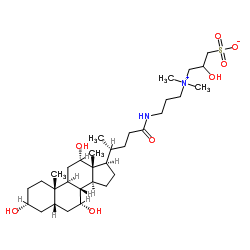Crystallizing membrane proteins using lipidic bicelles.
Rachna Ujwal, James U Bowie, Rachna Ujwal, James U Bowie, Rachna Ujwal, James U Bowie, Rachna Ujwal, James U. Bowie
Index: Methods 55(4) , 337-41, (2011)
Full Text: HTML
Abstract
Crystallization of membrane proteins remains a significant challenge. For proteins resistant to the traditional approach of directly crystallizing from detergents, lipidic phase crystallization can be a powerful tool. Bicelles are an excellent medium for crystallizing membrane proteins in a lipidic environment. They can be described as bilayer discs formed by the mixture of a long-chain phospholipid and an amphiphile in an aqueous medium. Membrane proteins can be readily reconstituted into bicelles, where they are maintained in a native-like bilayer environment. Importantly, membrane proteins have been shown to be fully functional in bicelles under physiological conditions. Protein-bicelle mixtures can be manipulated with almost the same ease as detergent-solubilized membrane proteins, making bicelles compatible with standard equipment including high-throughput crystallization robots. A number of membrane proteins have now been successfully crystallized using the bicelle method, including bacteriorhodopsin, β2 adrenergic receptor, voltage-dependent anion channel, xanthorhodopsin and rhomboid protease. Because of the success with a variety of membrane proteins and the ease of implementation, bicelles should be a part of every membrane protein crystallographer's arsenal.Copyright © 2011 Elsevier Inc. All rights reserved.
Related Compounds
| Structure | Name/CAS No. | Molecular Formula | Articles |
|---|---|---|---|
 |
CHAPSO
CAS:82473-24-3 |
C32H58N2O8S |
|
Capillary electrophoresis with laser-induced fluorescence de...
2015-01-01 [Talanta 131 , 366-71, (2014)] |
|
Partial loss of the DNA repair scaffolding protein, Xrcc1, r...
2015-07-01 [Neurobiol. Aging 36 , 2319-30, (2015)] |
|
3-O-alkyl-D-glucose derivatives induce fruit bodies of Pleur...
2005-03-01 [Mycol. Res. 109(Pt 3) , 374-6, (2005)] |
|
Detergent-solubilized bovine cytochrome c oxidase: dimerizat...
2000-10-24 [Biochemistry 39 , 12996-13004, (2000)] |
|
Rat brain gamma-secretase activity is highly influenced by d...
2007-06-26 [Biochemistry 46(25) , 7647-54, (2007)] |